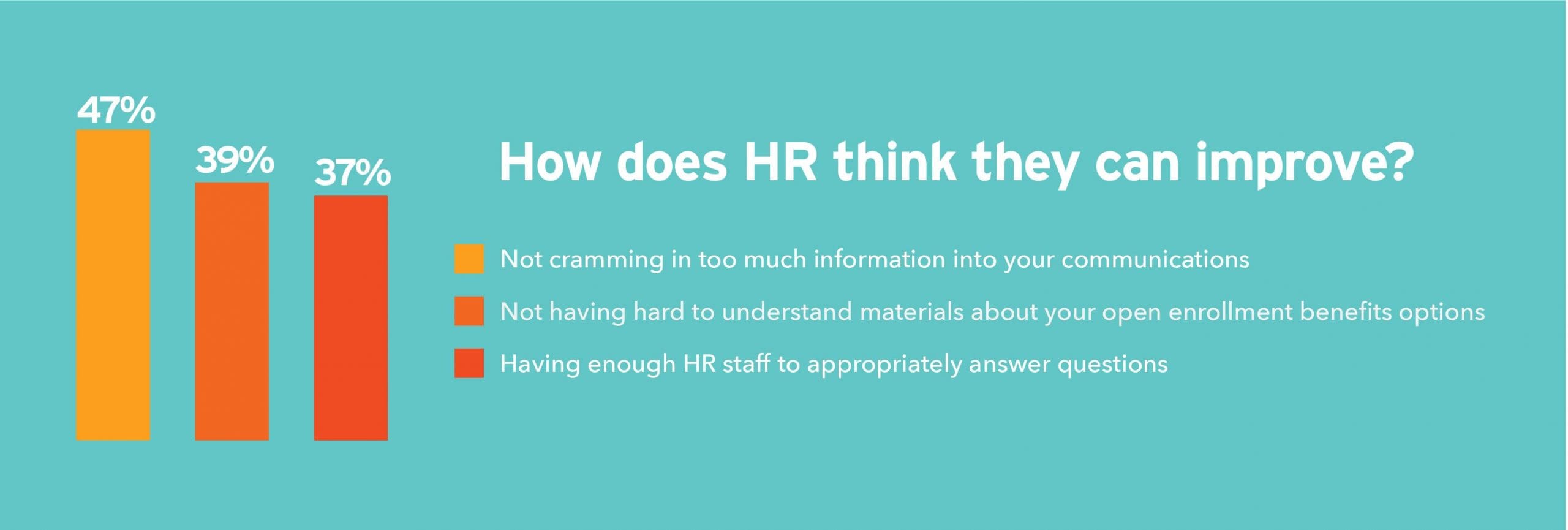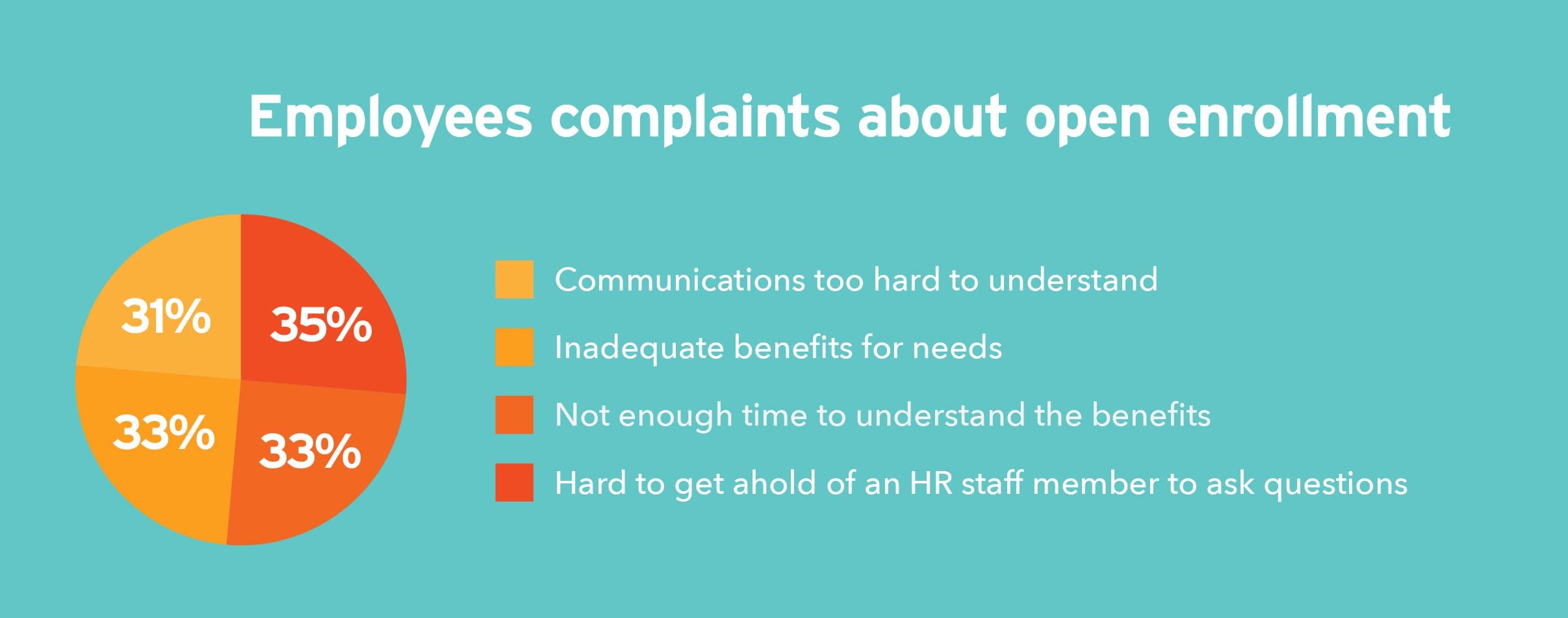We Surveyed HR Pros to See Their Biggest Complaints About Open Enrollment
October 30, 2019 by Josh Hrala
Open enrollment is a chaotic time of year for every HR professional. There are a ton of questions to field, forms to fill out, and deadlines to meet before people are eligible to receive their coverage for the next year.
Open enrollment is, for HR, basically what tax season is for accountants. There’s a lot to do and seemingly never enough people to do it.
To get to the bottom of exactly why open enrollment is so daunting, we went straight to the source: HR experts, asking them to rank and rate aspects of the season in order to understand the most common pain points.
Here’s what we found.
Most HR Leaders Believe Their Organizations Effectively Handle Open Enrollment
The first question we asked was whether or not folks thought their current open enrollment strategy was efficient and impactful. The vast majority (74 percent) said yes.
However, those same people also said that they do not ask their staff members whether or not they agree. This could lead to a few issues. For example, just because something is easy for HR, and the business in general, doesn’t mean that it’s easy for workers to understand.
That last bit is important. We can’t be the only ones that have received healthcare details only to have more questions than answers. Healthcare, after all, is complicated even if the systems that help us sign up for them have become easier and easier to use.
More on that later. For now, only 37 percent of participants said that they poll their staff members after open enrollment ends to understand if they thought the process was efficient and impactful, too.
The weird thing is that a whopping 74 percent said that their employees do believe that the period is handled correctly. How so many came to that conclusion isn’t mentioned, though they probably are using anecdotal evidence based on how many questions they have to field and/or how many complaints they receive.
Without a survey or some other way to actually collect opinions, the truth of the matter is that HR probably doesn’t know just how their staff members are feeling about open enrollment, especially given the fact that many people – even if they truly are upset with the process – will never say anything.
This is why anonymous surveys and things of that nature can be so impactful to analyze open enrollment and just about every other initiative HR takes on that deals directly with staff members.
Communication Needs Improvement
From there, we moved on to ask HR leaders what areas their companies could improve on, specifically these areas:
- Not hiding vital information from employees
- Not cramming too much information into your communications
- Not giving employees enough time to process and respond
- Not having enough HR staff to appropriately answer questions
- Not having hard-to-understand materials about your open enrollment benefits options
- Other
The second option, cramming too many details into communications, came in first with 47 percent of people choosing this option (respondents could pick multiple things from the list).
In second, with 39 percent, was having too many hard-to-understand materials about the benefits. And, in third, with 37 percent, participants said they do not have the required HR staff to accurately answer questions.
All three of these point to a single issue that we mentioned up top: open enrollment is confusing. There are a lot of details that need hammered out. Everyone has a unique need when it comes to healthcare and many people will have a lot of questions about their programs.
This, in effect, leads HR to stuff as much information into communications as possible in an attempt to quell the amount of confusion while also curbing how many questions they’ll inevitably have to field.
What this seems to do, though, is create a wall of text and information that, in and of itself, becomes unbearable.
So, with too much information, that information being hard to understand, and not having the staff needed to fully explain it, we can see a true pain point starting to emerge. But what about people who chose ‘other?’
Those who chose ‘other’ – a very small percentage (5 percent) – were allowed to write in their answers. One said ‘all of the above,’ which is concerning. Another said ‘online user enrollment experiences.’
The latter is interesting, especially given the fact that most modern approaches to open enrollment all feature online platforms (most of them are in the same vein as Healthcare.gov). While these platforms can certainly make plans easier to understand, they can also cause their own problems by being overly complex and labyrinthine by nature.
To get the bottom of this, let’s now turn our focus to staff members.
‘Availability’ Is the Number One Employee Complaint
Just like before, we asked HR leaders to tell us about their most common open enrollment complaints. This time, however, we asked them to tell us what their employees are telling them. We had them vote on these specific areas:
- Communications around open enrollment are hard to understand
- It’s hard to get ahold of HR staff to ask questions about my benefits options
- I don’t have enough time to get through the information and make a decision
- The benefits provided are inadequate for my needs
- Other
This time, the responses were much closer to each other percent wise. Coming in first, at 35 percent, was the complaint that ‘it’s hard to get ahold of an HR staff member to ask questions.’ This makes sense based on what the HR leaders said that they can improve on.
In second, we have a tie between ‘not having enough time to understand the benefits’ and ‘the benefits are inadequate for my needs.’ Both of these were voted on by 33 percent of those asked.
Last but not least, ‘communications are too hard to understand’ came in with 31 percent.
As you can see, all of these are very common complaints by many staff members. Besides the one about the benefits not being adequate, all of these have to do with information overload. Many workers do not understand their packages because things are not presented in a clear cut way.
At the same time, when they don’t understand, it can be a challenge to meet with an HR leader to help make sense of the matter.
This leads us to ponder the idea of inadequacy. If workers cannot understand their plans, are they really getting everything out of them that they could be? Is this complaint tied to the fact that information is hard to understand and even harder to clarify? It’s a definite possibility.
The Takeaways
All in all, our survey pointed to one common issue that seemingly all HR departments and businesses could improve upon: benefits communication.
With so many choices, so many details, and so many different needs, open enrollment is probably one of the most confusing times of the year for workers.
The brunt of this confusion falls squarely on HR’s shoulders, forcing them to field question after question while also making sure that plans actually get started, that people actually review their documents, and that they actually sign up in the first place.
More from Careerminds
In need of outplacement assistance?
At Careerminds, we care about people first. That’s why we offer personalized talent management solutions for every level at lower costs, globally.






